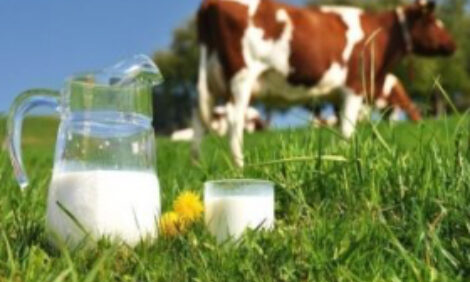



Sustainable Farming: The Benefits of Trees
ANALYSIS - Planting trees on a farm ticks many boxes. By promoting soil structure, trees help soil erosion and run off, whilst also providing wildlife with a habitat, reports Chris Harris.In the UK alone, 2.2 million tonnes of top soil are eroded from farmland fields each year, largely by surface water run-off and changes in cropping patters.
And according to Mike Townsend, the senior analysts at the Woodland Trust in the UK this produced a reduction in nutrients in the soil and a loss to agriculture as well as damaging the waterways and the wildlife in them.
“As well as a cost to agriculture, it is a cost to society in general,” Mr Townsend told a seminar at the recent Farm Business Innovations 2013 in London.
However, he said that shelter belts of trees can help to trap nutrients such as phosphorus and act as a nutrient sink as well as ensuring that the water stays on the farm.
He said that the spring and summer drought in the UK had been estimated to have cost British farmers around £400 million.
The use of trees as shelter breaks would help to reduce similar losses by reducing wind speed and water losses and he said that it has been shown that yields are higher in drought susceptible areas when trees are used.
Research from the US has shown that crop yields can increase by 3.5 per cent and gross margins can also be 3.5 per cent higher when trees are used as shelter-breaks and the effective shelter offered by the trees can be between 10 and 15 time their height.
Mr Townsend added that trees as windbreaks also provide shelter for pollinators and act as a highway for pollinators through the landscape as well as providing them with an early source of pollen through the tree blossom.
Mr Townsend encouraged farmers to use non-crop habitat as part of pest management on the farm.
For livestock, tree breaks also help to improve production and can be used as a welfare tool on the farm, acting as shelter from heat and poor weather conditions.
He said that tree cover can help to reduce heat stress in cattle - something that the US dairy industry has estimated has cost the sector $900 million a year.
“Shelter from cold and bad weather can also help feed conversion and weight gain and reduces losses and disease,” he said.
Mr Townsend said that using trees as cover for free range hens helps them to range and also discourages feather pecking.
He added that for livestock production using trees as shelter also helps to meet consumer expectations over welfare and environmental care.
However, tree shelter breaks on farms were most important for enhancing the environment and soil condition and reducing greenhouse gas emissions.
While large amounts of ammonia come from poultry and pig housing, trees can help to reduce the emission by capturing ammonia.
They also form a physical barrier to biosecurity hazards.
Mr Townsend said that water infiltration in shelter belts can be 60 times greater than in neighbouring grasslands and can be more significant than using field drainage. By capturing water run-off trees as shelter breaks can allow the water to percolate into the soil.
By controlling the water on the land and helping it to percolate into the soil, the tree barriers can act as flood risk reduction measures, which will also help to reduce costs, which in the UK were estimated to be around £1 billion in insurance costs.
The also help to improve the waterways by preventing livestock from entering them and eroding the banks and this in turn helps to encourage fish and other animals into the streams.
“Trees and shelter belts can make the management of upland farms for efficient and they hold wider environmental benefits,” Mr Townsend said.
“And on top of this trees can provide an economic resource.”



